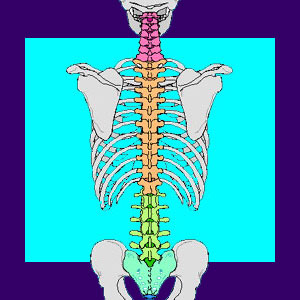
Osteoarthritis of the spine is also called spondylosis, degenerative joint disease or spinal arthritis. It is a universally seen process that can develop in our vertebral columns as we age. This condition is caused by normal use of our spinal joints, but can be worsened by several contributing factors.
While arthritic is a virtual eventuality for all adults, the degree of arthritic change can vary greatly. This is why almost all adults demonstrate arthritic change, but only some get symptoms associated with these anatomical alterations. Among those who do suffer pain, the duration and severity also varies to a large degree. It is for these and other reasons that the arthritic processes still present a challenging enigma to care providers.
The scope of this article will focus on the diagnostic process for osteoarthritis. We will provide some crucial facts that every aging person needs to know in relation to the universality of osteoarthritis in the vertebral column.
Diagnosing Osteoarthritis of the Spine
Spinal arthritis is often diagnosed exclusively through a physical exam. The doctor will look at and feel the patients spine. The doctor will look for any noticeable changes in the normal vertebral structure. They will check the range of motion and flexibility of the spine. Any symptoms presented will be compared to the structural findings for correlation.
If osteoarthritis of the spine is suspected, X-rays will be taken. These X-rays will show any structural changes in the vertebral bones. They will show any bone spur growth or narrowing of the intervertebral spaces.
The doctor will perform neurological tests to determine if the bone spurs are causing any pinched nerves. The doctor will check for tingling or numbness. They will also test for decreased nerve signal by checking the muscle strength.
If neurological symptoms are found, an MRI or CT scan will usually be performed to evaluate the extent of the nerve involvement. This neurological examination is crucial to creating an effective plan for treatment.
Spinal Osteoarthritis
If your doctor tells you that you have spinal arthritis, tell that doctor: “I know already. It is normal for someone my age to have arthritis.”
Now ask them the extent and prognosis for the condition. If they tell you that the anatomical changes are typical, you will have little to fear. If they pronounce severe arthritic processes at work, then you might have to begin investigating treatment options together.
Just be warned… Many cases of completely normal osteoarthritis are unfairly blamed for causing pain. In these scenarios, there are no other apparent causes available, so the arthritis acts as a suitable scapegoat. This occurrence can lead to terribly disappointing therapy results, so be wary.
Do not be intimidated by the diagnosis of normal osteoarthritis. Fear of this condition will just give it more power over you and your life. If symptoms are mild to moderate, then it is ok to relax. If you do not worry about them, they will most likely improve on their own or with mild symptomatic treatment.
Remember, no doctor can stop arthritis or cure the condition. The only true cure for this condition is the fountain of youth. Do you know where it is? Hmm, me neither… too bad!
Back Pain > Arthritis in the Spine > Osteoarthritis of the Spine




